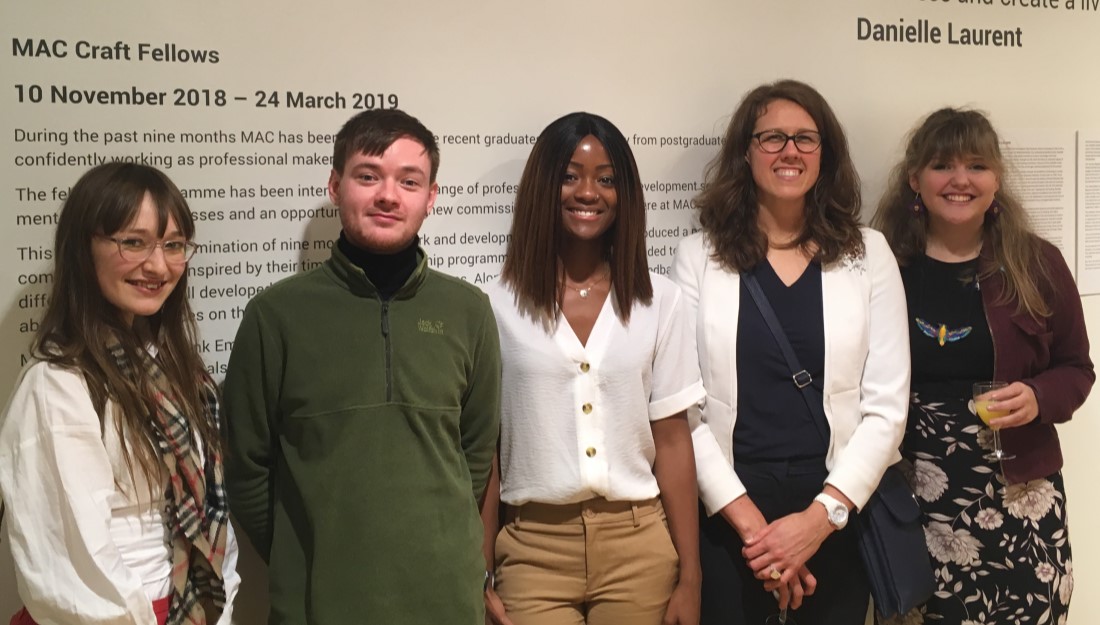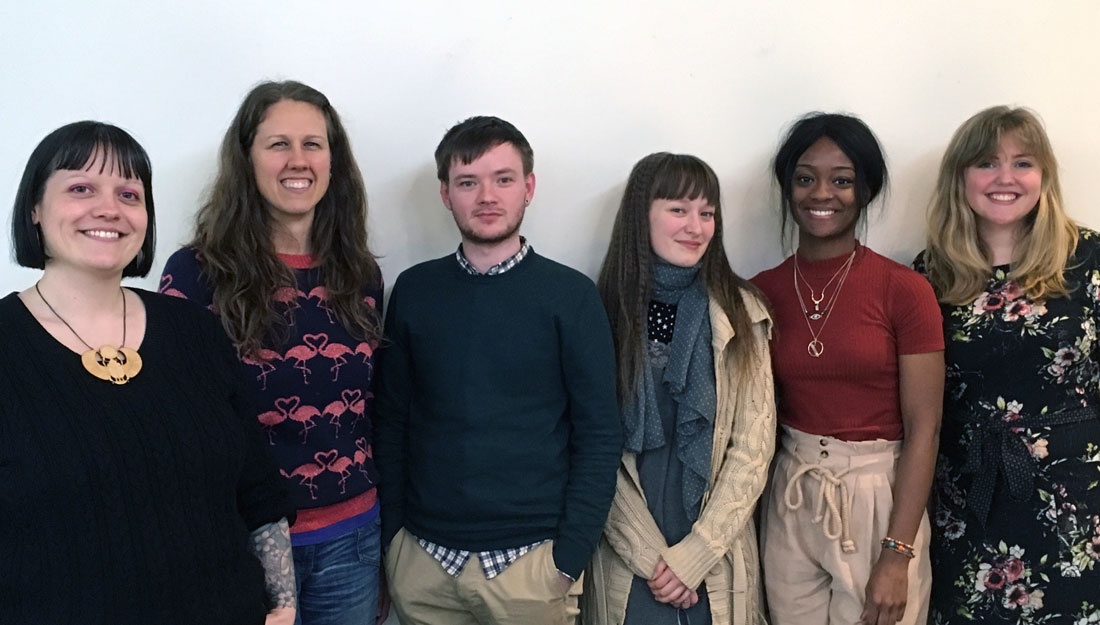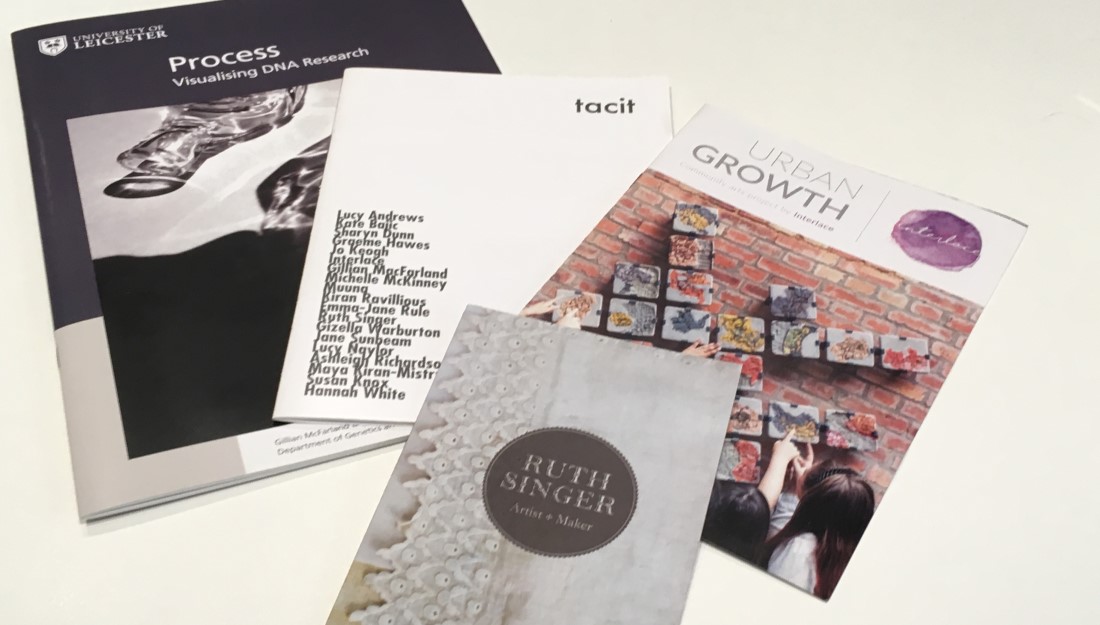Facilitated by Katie Honnor – Director, Made by Hand online
A partnership between MAC Birmingham and Craftspace

The Craft Fellows at their exhibition launch
Top tips from Katie Honnor – Director, Made by Hand Online
This guest post was written by Katie Honnor, Director of Made By Hand Online, a curated website dedicated to selling high quality Contemporary Craft from all over the UK and celebrating makers. More information about Made By Hand Online and various makers can be found via their website online.
1. Everything about you and your business on the internet should (as much as possible) compliment and support all your hard work and promotion offline with stockists and at shows etc. Start with your audience. List and profile your audience to make sure your online presence is meeting the needs of everyone you want to reach….customer, journalist, curator. People move so quickly online. They make quick judgements based on images and styling. Try and capture the ethos, tone and role of your business/service on your homepage and at the top of your social media feeds so that first impressions are accurate. Also, be sure to include quick access to your contact information.
2. Think about everything that has led you to this point – your past employment, travels, inspirations, hobbies. You’ll have strands of your life that have influenced your business and are of interest to your audience. These experiences may seem mundane to you or separate to what you are doing now, but they could help you make connections. Share what makes you and your business different – it will be of interest to others and will help you stand out.
3. Take time to make sure you have a collection of strong images to accurately represent your work. Don’t let fuzzy pictures or confusing text stop a customer (or anyone else) from understanding you and appreciating your skill and the value of your work. Create a folder of your best images and save 2 versions of each image, one at 72dpi for web use and one at 300dpi ready to send out for print. Put all the essential information in the image file names (especially your name and product name). Aim for a mix of styled and cut out shots.
4. Research…Use your audience list and research magazines and other sources of printed and online press in order to work out where you should try to get coverage. What kind of publication does your customer read? Think about their tastes, income, hobbies and professions. Then, get to know the magazines so that you can tailor your press releases to the publications and make a good impression with the journalists. And remember, the press needs you!
5. Plan your marketing so that you can control it. The internet can seem so overwhelming and demanding because it’s there, all the time, and people are always interacting, perhaps making you feel that you need to engage all the time as well! Remember you are a creative person making original work. Use those skills to be creative and original with your marketing. Plan your social media posts, put dates in the diary of when to send certain themed press releases etc, so that you can spend the majority of your time designing and making your work. Do your bit, but don’t let the internet take over.
After her introduction, Katie got us to write a range of different elevator pitches/summaries of our practices. Each aiming specifically at the different sectors we want to work in. For instance, I wrote them for the following:
– Gift market
– Show curator
– Education Sector
– Art collector
– Gift Shops/Galleries
– Museum Curator.These all overlap but have slightly different focal points. This shows us that when approaching all these different people/companies the language and how you represent yourself changes. What they want to know about you changes, so being prepared for this shift is essential if you want a multi-faced business.We then discussed other essential things that curators look for. This included advice on photography and the complex inner workings of websites: the importance of captioning images, keywords and other ways to get your website higher on Google listings.
This was also complimented by her advice on social media and newsletters, how to plan and execute efficiently; to help drive traffic to your website without over selling while looking professional. Katie explained the importance of keeping on top of this side of the business, as opposed to getting lost in the making side of your practice.
The next part of the day was about the press. We discussed the importance of making sure you know your customers and finding out where they are looking for entertainment. We browsed through a range of magazines, pointing out the product placement and Katie explained how many of these makers hadn’t paid to be featured and by contacting the magazines directly, it saves the journalist/columnist time. Rather than them searching through hundreds of social media accounts and websites, if your email appears at the right time, you are actually helping them. With this Katie explained the timetable of the press and how far ahead each type of publication typically works. This helps us with who and when to target with which products.
The last part of the day was spent with each of us writing our own press releases. This was incredibly helpful know how to structure a professional press release, what to include and actually what is news? Katie gave us so much invaluable advice and explained how she normally finds the right person to send her press releases to and typically when is the best time to send them!
Laura Marriott

